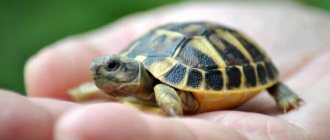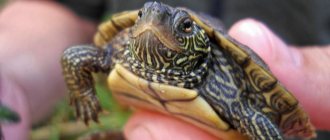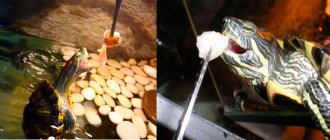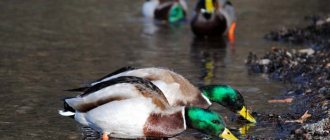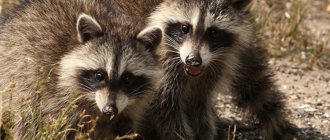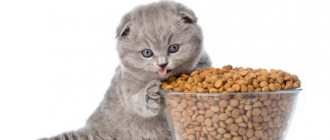Review author: “ZooVita”
Turtles are quite demanding and difficult reptiles to keep. And this applies, first of all, to their diet. Modern pet food manufacturers offer turtle owners a wide variety of “balanced” foods that make caring for their pet much easier.
However, in order to choose the right basic and additional diet and bait, it is necessary to understand in more detail what you can feed the turtle.
Theoretical aspects
Turtles belong to the class of reptiles and, according to their habitat, are divided into land, aquatic: freshwater and marine, semi-aquatic. In addition, according to the method of nutrition, three main groups are distinguished.
Each of these groups is characterized by an optimal ratio of feed of plant and animal origin, which must be taken into account when choosing a diet.
- Carnivores – animal food 70%-90%, plant food 10%-30%. These include almost all aquatic marine species and young freshwater turtles: red-eared, marsh, trionics, etc.;
- Herbivores – plant food up to 95%, animal food no more than 5%. Exclusively land turtles. Of the most popular species kept in captivity, we can note: Greek and Central Asian;
- Omnivores - the ratio of food of plant and animal origin is approximately equal. The same diet includes some types of young semi-aquatic and adult freshwater species, for example, red-legged, red-eared, etc.
How to properly feed a turtle depends not only on the group it belongs to, but also on its species and age. Choosing the wrong type of feed or a significant shift in feed ratio is guaranteed to lead to digestive disorders and metabolic diseases.
Should reptiles be given water?
Yes, reptiles need moisture, but some drink no more than once a month, while others drink a couple of times a week, it all depends on the species characteristics of the pet. The composition of the pet’s diet plays an important role in this matter. If a turtle regularly consumes succulent food - fruits, vegetables, succulents, then it needs less water than a pet that often eats dry food.
To improve digestive processes and take care of your pet’s hygiene, it is recommended to bathe your armored friend once every 5-7 days. The reptile is placed in a shallow container with warm water, which should reach the middle of the carapace. Within 20-30 minutes the pet will get drunk and enjoy the procedure
It is important to ensure that water does not enter the turtle's sinuses.
The menu of omnivorous reptiles consists of animal and plant products. Care should be taken that your pet’s diet is not monotonous and includes both ingredients in approximately equal quantities.
Predatory
The main diet consists of lean fish. As practice shows, the best choice is hake, pollock and cod from sea fish, as well as bream, bleak and perch from freshwater. There is no particular difference or preference between marine and freshwater species.
It is recommended to give your pet liver weekly. It can be either fish, beef or chicken. Young turtles need to cut the fish into small pieces. The spine can be left, but the ribs must be removed.
Adults can eat large pieces, and if the fish is small, then you can feed it whole.
The following food products can be used as additional feed:
- Seafood - octopus tentacles, shelled shrimp cephalothorax, small squid and mussels;
- Liver - including the liver of various animals, chicken or beef heart, as well as live food in the form of baby frogs or mice. It is strictly not recommended to feed turtles with meat, minced meat, sausages, etc.;
- Others (as a rule, given to young animals) - mealworms, food cockroaches, daphnia, snails without shells.
The food given to predatory turtles does not require heat treatment, that is, it must remain raw. First of all, this applies to various additives, for example, shrimp should be gray, not pink.
What should you feed your river turtle?
Most amphibians have a predatory nature. It is because of this reason that many turtles do not eat dry food mixtures quite well. Often the pet simply does not want to eat this food, even because of this it is not worth spending money on this food. So what do turtles eat?
Turtles at home readily eat meat, fresh or frozen. In order for an amphibian animal to have a shell with a strong and durable structure, it should include mollusks in the aquarium menu; they can be purchased at any pet store. And experienced breeders themselves breed mollusks in an aquarium at home; in these cases, pets always receive their favorite delicacy fresh.
Note! Shellfish are a major source containing high levels of calcium and other beneficial elements. For this reason, this food is vital for the full existence of this amphibian animal.
What do freshwater houses eat? They can willingly eat fish, but only fresh. The turtle simply cannot live without this tasty delicacy. She can eat almost any type of fish, but it is better to choose varieties that have few bones. In this case, the carcass should be cut into small pieces, and they should be given to the reptile in portions until it is satisfied.
In addition, the turtle can be fed with other food:
- small insects - locusts, mosquitoes, beetles;
- The turtle feeds on various larvae;
- will eagerly eat invertebrates, namely earthworms;
- algae;
- plant foods.
But the most important condition is a correct and balanced menu. A turtle should eat different types of food every day - fish, meat, shellfish, insects. It is not recommended to use only meat and fish for feeding.
Herbivores
Any vegetables, fruits, root vegetables or greens can be used as the main diet. Starting from dandelions and carrots (clover, thistle, alfalfa, regular lawn grass) and ending with a variety of lettuce, carrots, cabbage, etc.
When preparing a diet, take 2-3 times more greens than fruits and vegetables. As additives to the main food of herbivorous turtles, you can use bran, dry yeast or dried seaweed, and soybean chaff.
Omnivores
Despite the name, semi-aquatic and marsh turtles are the most demanding in terms of food composition. In addition, their diet can change significantly during the period of growing up.
The optimal composition of the diet depends solely on the type of turtle. In addition, it is necessary to determine how many times to feed small turtles, whose main diet consists of food of animal origin.
Ready-made dry food
Despite the assurances of some manufacturers about the complete self-sufficiency of the feed they produce, practice has shown that the optimal diet will be a combination of dry food and live feeding.
For example, if the diet of a fairly common red-eared turtle is dominated by live (especially fatty) fish, this is guaranteed to lead to an acute deficiency of vitamin E and the occurrence of steatitis.
Dry food that provides your pet with vitamin supplements in the proper quantities can lead to a significant lack of amino acids, which can lead to spasms of the jaw muscles - the turtle simply will not be able to open its mouth.
A balanced diet includes both factory-produced dry food and live food.
When choosing dry food for your pet, you need to take into account that some manufacturers' composition does not meet the animal's requirements.
As you can see in many photos of turtle food, the most common replacement is for animal products such as rather expensive fish and seafood with cheaper substitutes - fishmeal and various herbal additives.
What is not recommended to include in the diet
The most dangerous foods for river turtles are from the human table, as well as food consumed by pets.
Never feed your reptiles the following types of food:
- vegetables;
- fruits;
- too fatty varieties of fish and meat.
You should also be especially careful when choosing insects and plants. Many types of them can be poisonous, while others can interfere with the normal process of calcium absorption or cause iodine deficiency.
If you follow all the necessary recommendations and nutritional tips, your pet will always be in a healthy state of mind. For him, the most important thing is a rich and balanced diet, and you can think through it yourself, the main thing is to first study its features.
For aquatic turtles
The optimal diet of an aquatic turtle is much more complex than that of a land turtle. It should be borne in mind that full-fledged live feeding is quite difficult here, since in nature such animals feed exclusively on fresh fish.
And seafood, which is offered in domestic stores, goes through cycles of freezing and thawing several times. This leads to the destruction of nucleic acid proteins, as well as oligoelements, which are vital for the predatory sea turtle.
Therefore, the addition of dry food saturated with appropriate microelements is a prerequisite for creating a complete diet. It is imperative to check whether the food contains fat-soluble vitamin complexes, of which vitamins A and E are considered the most popular.
Social structure and reproduction
Photo: Red-eared turtle
Male turtles reach sexual maturity when their shell is 10 cm in diameter, and female turtles are mature when their shell is 15 cm in diameter. Both males and females are ready to reproduce at the age of five to six years. The male is smaller than the female, although this parameter is sometimes difficult to apply since the individuals being compared may be of different ages.
Courtship and mating take place underwater from March to July. During courtship, the male swims around the female, directing his pheromones towards her. The female begins to swim towards the male and, if she is receptive, sinks to the bottom to mate. Courtship lasts about 45 minutes, but mating takes only 10 minutes.
The female lays between two and 30 eggs depending on body size and other factors. Moreover, one individual can lay up to five clutches in one year, with time intervals of 12-36 days.
Interesting fact! Fertilization of the egg occurs during oviposition. This process allows fertilized eggs to be laid in the next season, since the sperm remains viable and available in the female’s body even in the absence of mating.
In the last weeks of pregnancy, the female spends less time in the water and looks for a suitable place to lay eggs. She digs a hole-nest using her hind legs.
Incubation takes from 59 to 112 days. The offspring remain inside the eggshell for two days after hatching. During the first days, the cubs still feed from the yolk sac, the reserve of which still remains in the egg. The area through which the yolk is absorbed must heal on its own before the turtles can swim. The time between hatching and immersion in water is 21 days.

